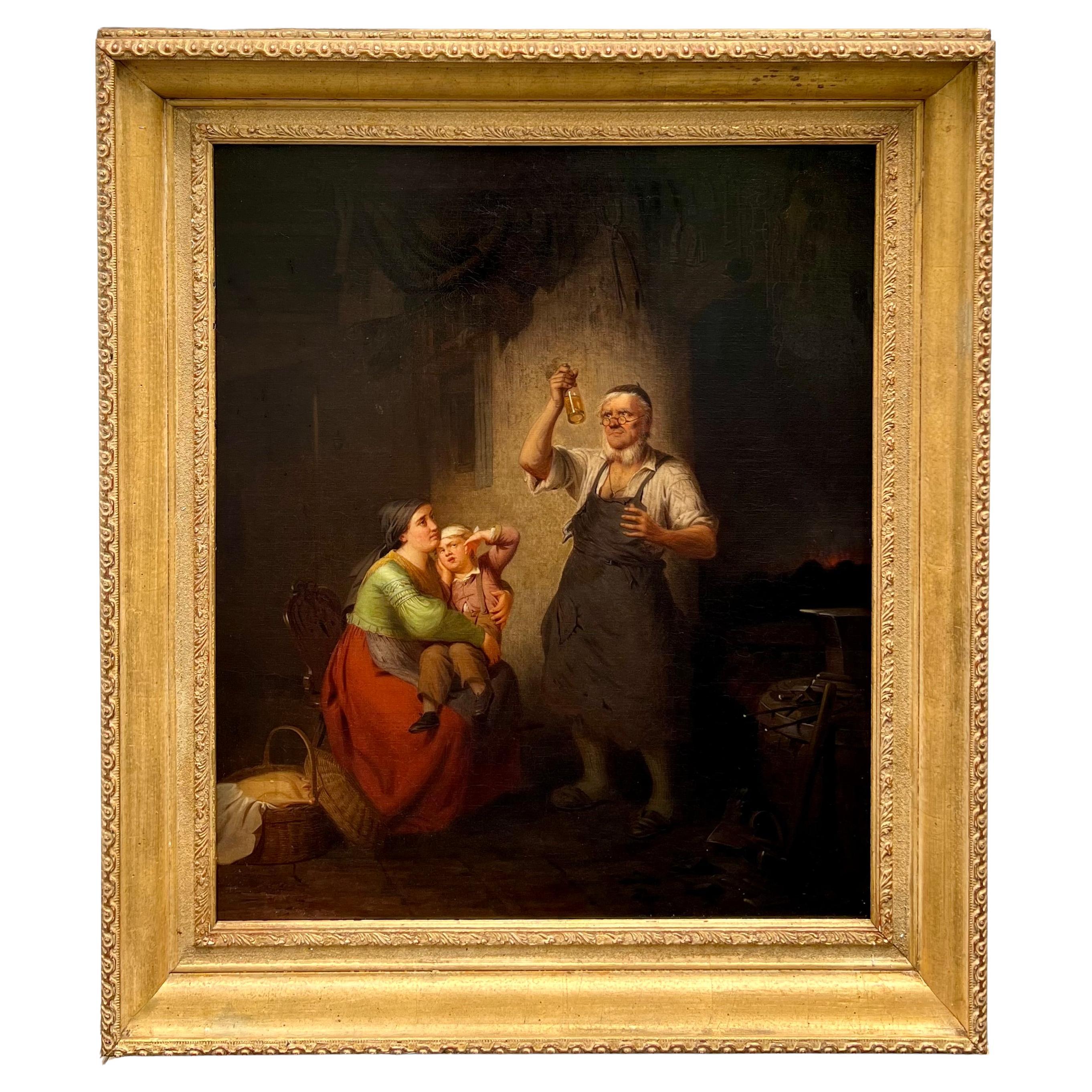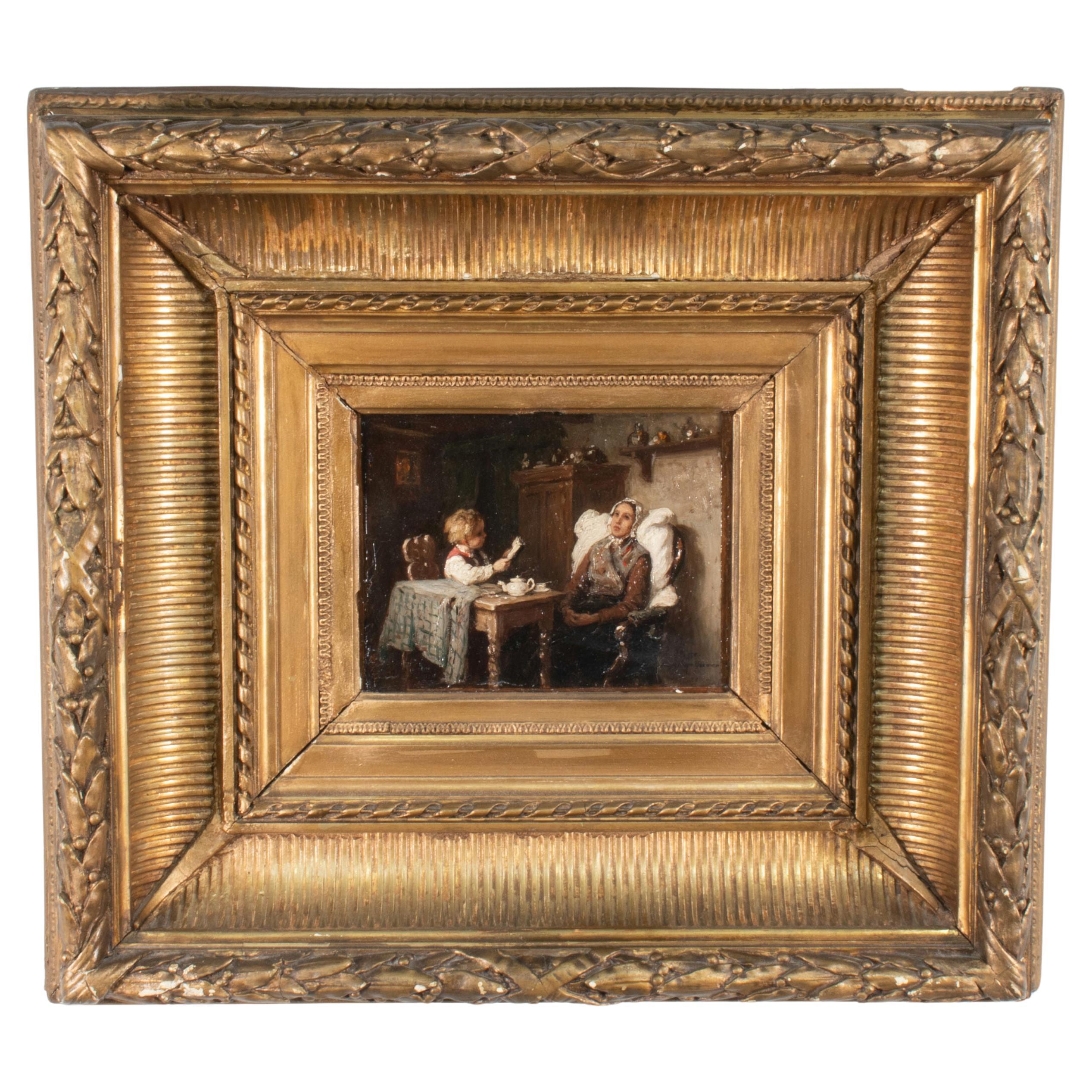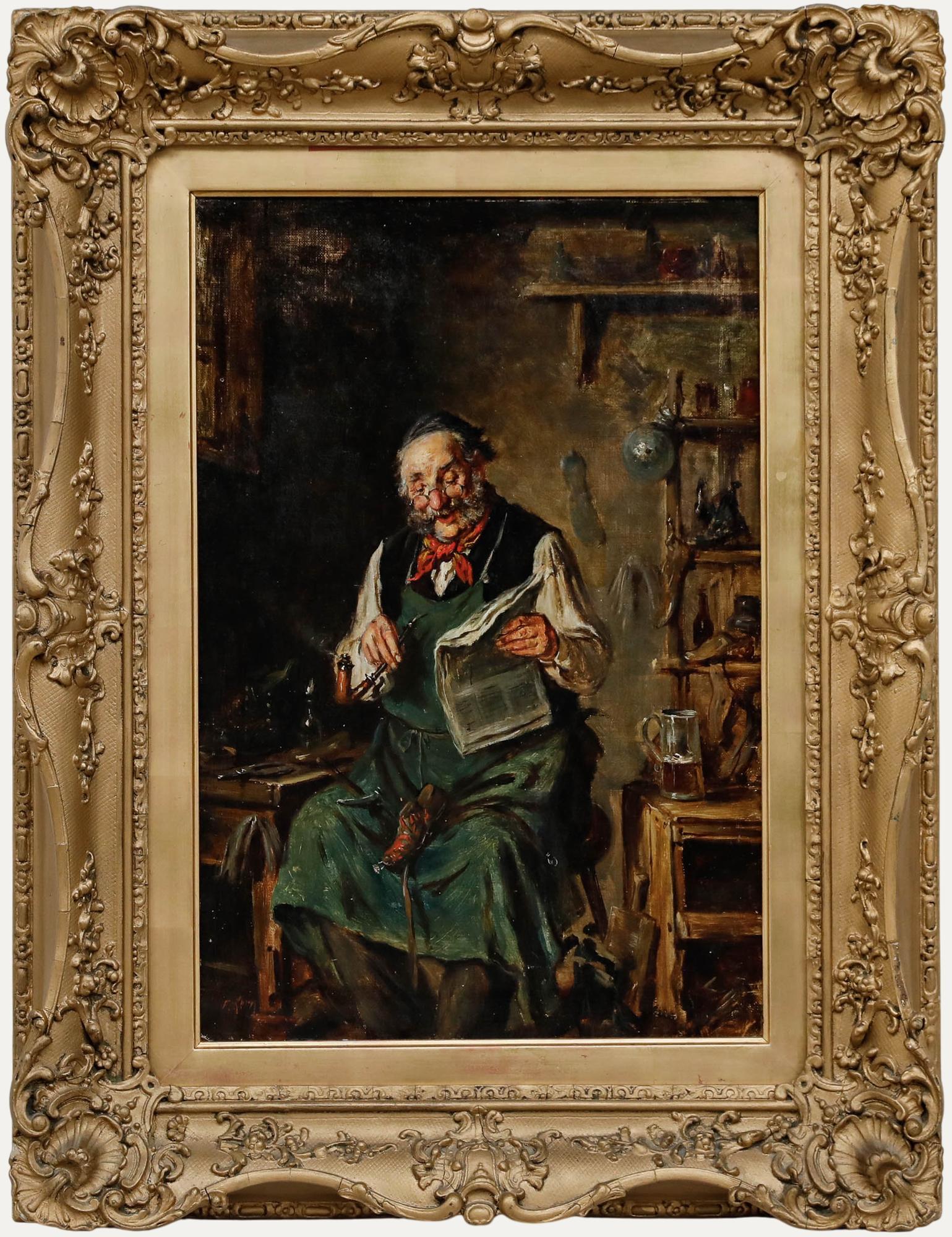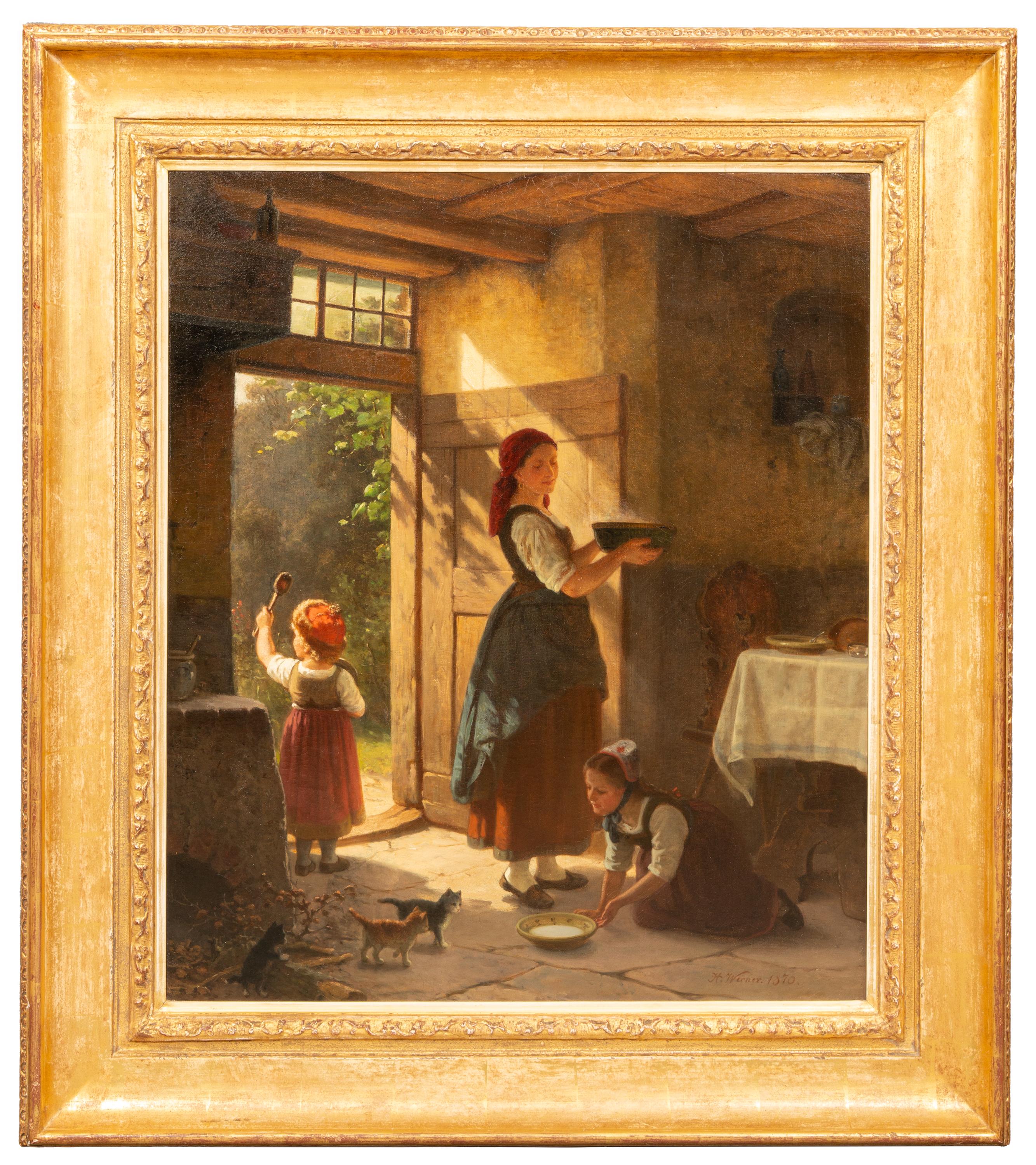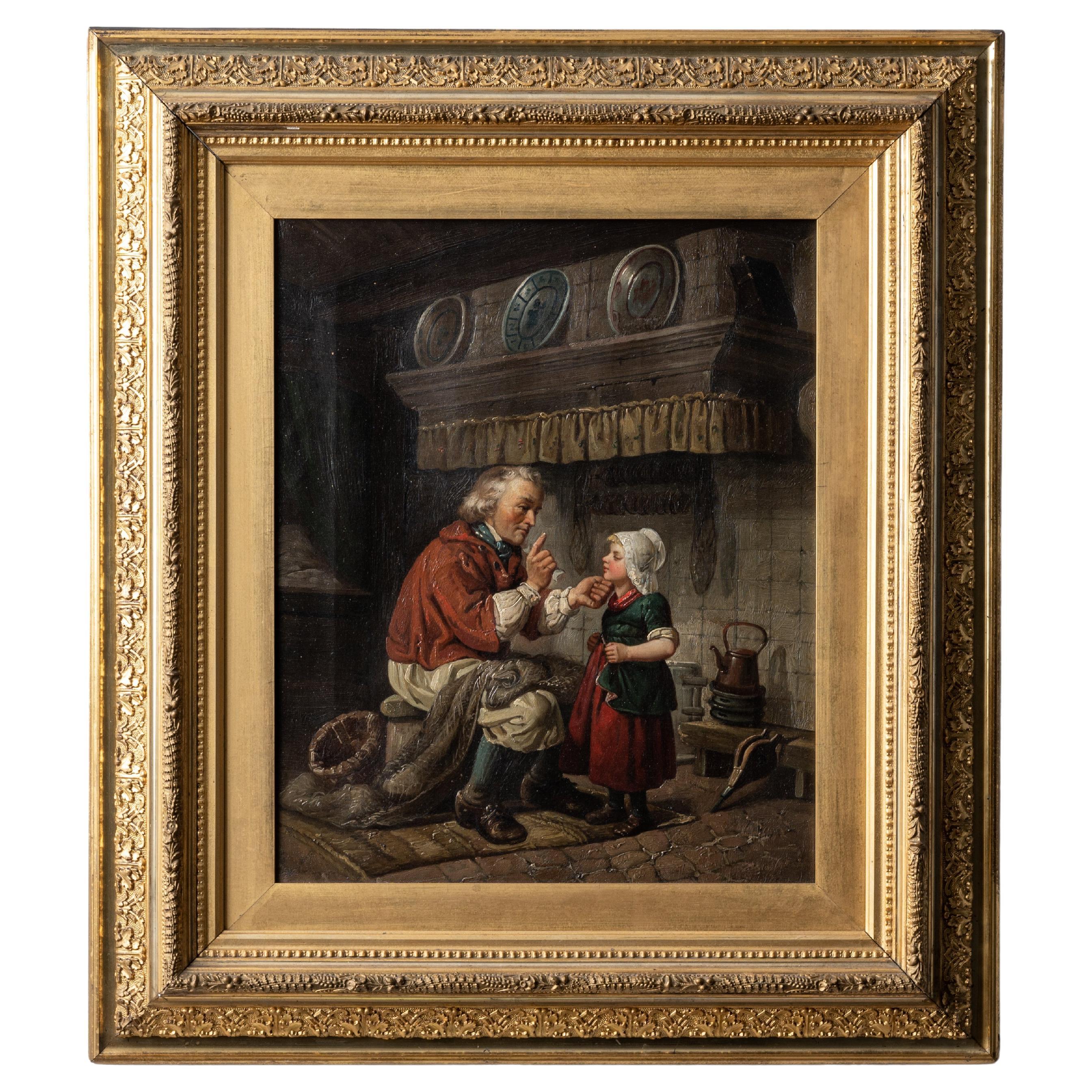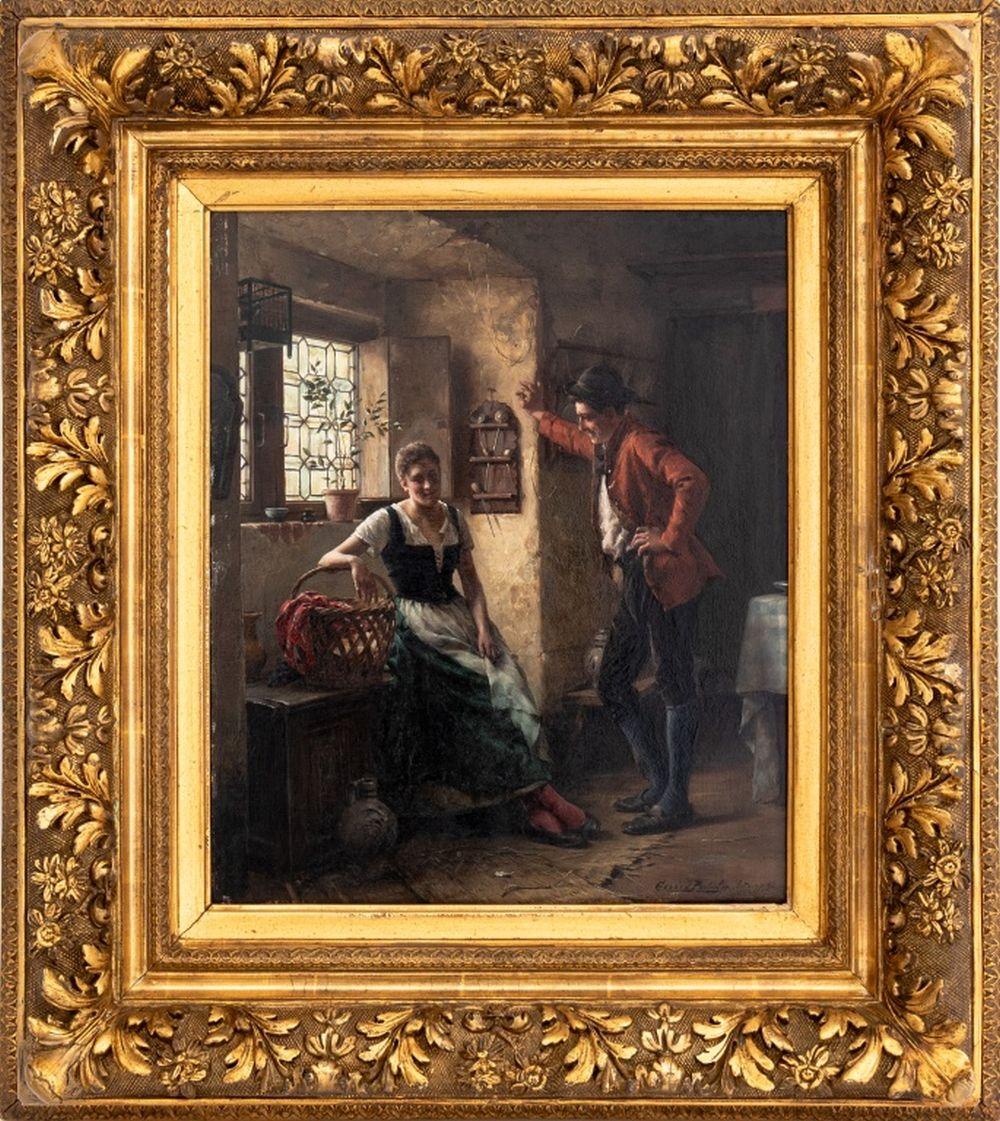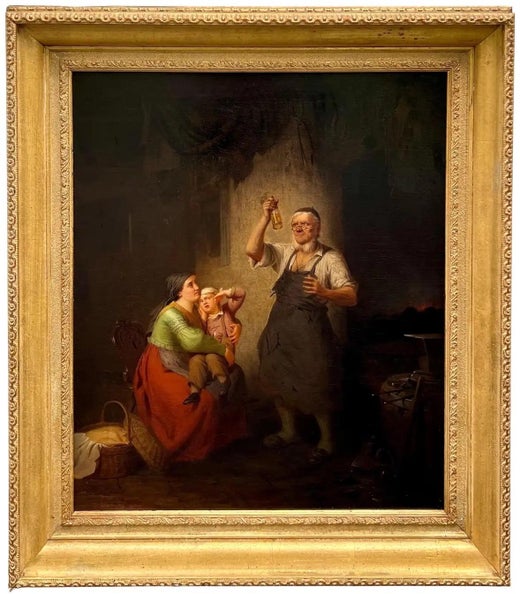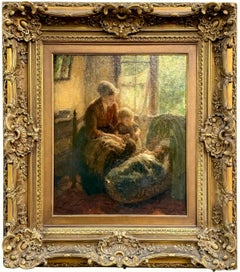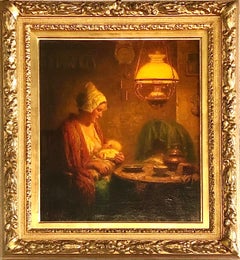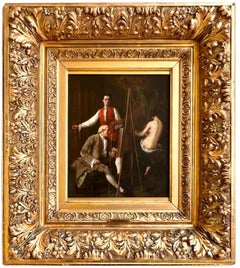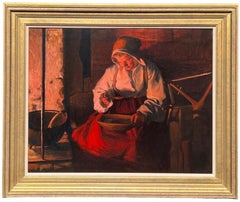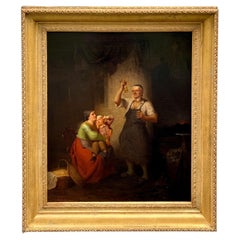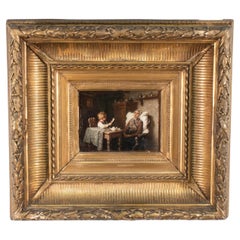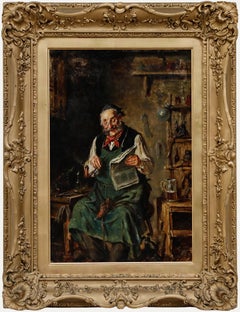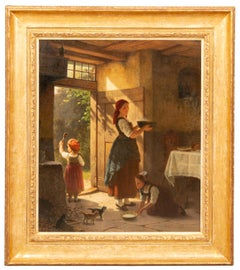Items Similar to The Chemist
Video Loading
Want more images or videos?
Request additional images or videos from the seller
1 of 9
Johann Georg Meyer von BremenThe Chemist19th Century
19th Century
$9,800
£7,373.59
€8,516.65
CA$13,849.96
A$15,029.32
CHF 7,964.21
MX$184,327.24
NOK 98,556.56
SEK 93,130.73
DKK 63,581.06
About the Item
Oil on canvas, signed in the lower right. Measures 36" x 41" including the frame. Johann Georg Meyer Von Bremen
(German 1813-1886) was a genre painter. He was the son of master baker Johann Georg Meyer. His mother was strictly religious. From 1833 he studied at the Düsseldorf Academy of Fine Arts , which was led since 1826 by Friedrich Wilhelm von Schadow, the son of the sculptor Johann Gottfried Schadow. In addition to Schadow, Karl Ferdinand Son was his teacher there. Meyer acquired the necessary craftsmanship skills to make a living from the sale of his paintings, but he was initially unable to do so. From 1841 to 1852 he maintained his own studio in Düsseldorf. On his travels to Brussels and Antwerp Meyer experienced the works of Peter Paul Rubens and Anthonis van Dyck. In 1851 he married the singer Julia Beer. When his painting The Prayer of a Widow received the Little Golden Medal at the Berlin Academic Exhibition, Meyer moved to Berlin in August 1852, where he later opened a studio. The sale of his works was increasingly better; In 1838 he received only 19 Thaler and 25 penny for the painting Mother and Child, so in 1886 his last painting Der Liebling in Berlin yielded 25,000 marks. Meyer was especially popular with emigrants to America, who wanted to preserve a piece of homeland in his pictures. His work the Message of Love, is located at the Metropolitan Museum of Art in New York. In 1854, the King of Prussia appointed him a professor at the Academy of Fine Arts in Berlin. After traveling in the Hessian, Bavarian and Swiss mountain districts Meyer gathered images for genre scenes and these then predominated. The artist repeatedly visited Belgium and in 1852 he moved to Berlin where he was made a professor in 1863. He was a member of the Amsterdam Academy and was awarded the Order of Leopold and Medal in Philadelphia in 1876.
- Creator:Johann Georg Meyer von Bremen (1813 - 1886, German)
- Creation Year:19th Century
- Dimensions:Height: 41 in (104.14 cm)Width: 36 in (91.44 cm)Depth: 3 in (7.62 cm)
- Medium:
- Movement & Style:
- Period:
- Condition:
- Gallery Location:Wiscasett, ME
- Reference Number:1stDibs: LU506314831032
Johann Georg Meyer Von Bremen (German 1813-1886) was a genre painter. He was the son of master baker Johann Georg Meyer. His mother was strictly religious. From 1833 he studied at the Düsseldorf Academy of Fine Arts , which was led since 1826 by Friedrich Wilhelm von Schadow, the son of the sculptor Johann Gottfried Schadow. In addition to Schadow, Karl Ferdinand Son was his teacher there. Meyer acquired the necessary craftsmanship skills to make a living from the sale of his paintings, but he was initially unable to do so. From 1841 to 1852 he maintained his own studio in Düsseldorf. On his travels to Brussels and Antwerp Meyer experienced the works of Peter Paul Rubens and Anthonis van Dyck. In 1851 he married the singer Julia Beer. When his painting The Prayer of a Widow received the Little Golden Medal at the Berlin Academic Exhibition, Meyer moved to Berlin in August 1852, where he later opened a studio. The sale of his works was increasingly better; In 1838 he received only 19 Thaler and 25 penny for the painting Mother and Child, so in 1886 his last painting Der Liebling in Berlin yielded 25,000 marks. Meyer was especially popular with emigrants to America, who wanted to preserve a piece of homeland in his pictures. His work the Message of Love, is located at the Metropolitan Museum of Art in New York. In 1854, the King of Prussia appointed him a professor at the Academy of Fine Arts in Berlin. After traveling in the Hessian, Bavarian and Swiss mountain districts Meyer gathered images for genre scenes and these then predominated. The artist repeatedly visited Belgium and in 1852 he moved to Berlin where he was made a professor in 1863. He was a member of the Amsterdam Academy and was awarded the Order of Leopold and Medal in Philadelphia in 1876.
About the Seller
5.0
Vetted Professional Seller
Every seller passes strict standards for authenticity and reliability
Established in 1999
1stDibs seller since 2016
110 sales on 1stDibs
Typical response time: 2 hours
- ShippingRetrieving quote...Shipping from: Wiscasett, ME
- Return Policy
Authenticity Guarantee
In the unlikely event there’s an issue with an item’s authenticity, contact us within 1 year for a full refund. DetailsMoney-Back Guarantee
If your item is not as described, is damaged in transit, or does not arrive, contact us within 7 days for a full refund. Details24-Hour Cancellation
You have a 24-hour grace period in which to reconsider your purchase, with no questions asked.Vetted Professional Sellers
Our world-class sellers must adhere to strict standards for service and quality, maintaining the integrity of our listings.Price-Match Guarantee
If you find that a seller listed the same item for a lower price elsewhere, we’ll match it.Trusted Global Delivery
Our best-in-class carrier network provides specialized shipping options worldwide, including custom delivery.More From This Seller
View AllA Mother and Her Children in the Kitchen
By Bernard Pothast
Located in Wiscasett, ME
This is an original unique oil painting by the artist Bernard Pothast, signed in the lower right corner, featuring a mother and her children sitting around the kitchen table. Measure...
Category
Early 20th Century Dutch School Interior Paintings
Materials
Oil
Feeding the Baby
Located in Wiscasett, ME
Oil on canvas, signed upper left. Provenance: Sothebys Amsterdam, Private collection London, Private collection Palm Beach.
His working period was from about 1894 to 1973, successively in Rotterdam, Heeze (Heeze-Leende), Hilversum and Laren. He was educated at the Craft School for decorative painters and received evening lessons at the Rotterdam Academy under the direction of A. van Maasdijk.
He was a member of the Vereeniging Sint Lucas...
Category
Early 20th Century Dutch School Interior Paintings
Materials
Oil
The Painter and His Muse
By Benjamin Eugène Fichel
Located in Wiscasett, ME
Oil on panel signed in the lower right corner and presented in a period frame measuring 21" x 18.5".
Provenance:
Private Collection
Bradbury Art and Antiques, Wiscasset, ME
Benj...
Category
19th Century Baroque Figurative Paintings
Materials
Oil
Preparing the Meal
By Sam Uhrdin
Located in Wiscasett, ME
This oil on canvas is signed and date in the upper left and measures 38" x 45.25" including the frame.
Sam Uhrdin (Swedish School, 1886-1964). Sam Uhrdi...
Category
1940s Impressionist Figurative Paintings
Materials
Oil
Tea Time
By Frank Bramley
Located in Wiscasett, ME
Signed and dated 92 lower left. Oil on canvas. Frank Bramley British, 1857-1915 Frank Bramley is considered one of the most important artists of the Newlyn School, the group of artists who settled in Newlyn, Cornwall during the 1880s and 1890s, drawn by the light, lifestyle and the example of Alexander Stanhope Forbes, and were at the forefront of 'British Impressionism'. He was particularly ‘in the news’ when his painting of a woman reading in a garden made the astonishing price of $590,000 at Sotheby's New York in late May 1996. As the seminal catalogue of the famous Newlyn School exhibition states, Bramley's reputation has rested for some time on Hopeless Dawn, his major RA exhibition of 1888, and which in recent years has been hung almost constantly at the Tate Gallery. Bramley was born in Lincolnshire and trained at Lincoln Art School, later at Verlat's Academy in Antwerp, from where he went to Venice in 1882-83, where our painting was executed. He first showed at the Royal Academy in London in 1884 (both paintings were Venetian scenes), and it was in the winter of 1884/5 that Bramley settled in Newlyn. He was a quiet and reserved figure, prone to bouts of melancholy. He worked on his own in a tiny studio in an old thatched cottage - the cottage consisted of two rooms, one at ground level (which was the studio) and one which was below ground which was inhabited by a woman who'd lost her arms and who managed to look after a set of tiny children as well as a small potato and turnip shop. Bramley moved to a purpose-built glass studio in 1889. He is known as the master of the so-called 'square-brush technique' which characterizes much of the best Newlyn School work and he used this until 1893, later than most of his colleagues. Bramley was friendly with the great artist Sargent and with him was elected an associate of the Royal Academy in 1894, being elected a full member in 1911. In 1891 he had married, and 4 years later they moved to the Midlands where his work became less socially orientated and more purely decorative. His last years were spent in a London flat...
Category
1890s Victorian Figurative Paintings
Materials
Oil
$58,000
The Faithful Companion
By Mari ten Kate
Located in Wiscasett, ME
This wonderful painting features a loyal dog watching over a napping baby in a sunny courtyard. It is an oil on board and features a period, possibly original, frame and is signed in...
Category
19th Century Victorian Landscape Paintings
Materials
Oil
You May Also Like
"The Chemist At Work" by Johann Georg Meyer von Bremen
By Johann Georg Meyer Von Bremen
Located in Wiscasset, ME
Oil on canvas, signed in the lower right. Measures 36" x 41" including the frame.
Johann Georg Meyer Von Bremen (German 1813-1886) was a genre painter. He was the son of master baker Johann Georg Meyer. His mother was strictly religious. From 1833 he studied at the Düsseldorf Academy of Fine Arts , which was led since 1826 by Friedrich Wilhelm von Schadow, the son of the sculptor Johann Gottfried Schadow. In addition to Schadow, Karl Ferdinand Son was his teacher there. Meyer acquired the necessary craftsmanship skills to make a living from the sale of his paintings, but he was initially unable to do so. From 1841 to 1852 he maintained his own studio in Düsseldorf. On his travels to Brussels and Antwerp Meyer experienced the works of Peter Paul Rubens and Anthonis van Dyck. In 1851 he married the singer Julia Beer...
Category
Antique 19th Century German Victorian Paintings
Materials
Paint
Late 19th Century Oil on Board by Johann Georg Meyer Van Bremen
By Johann Georg Meyer Von Bremen
Located in Chicago, IL
This small and exquisite 19th-century oil on cardboard titled “Reading to Mother” by Johann Georg Meyer von Bremen depicts a gentle interior scene with a young boy attentively reading to a woman, presumably his mother. They are both seated at a small table, the woman rests in a chair outfitted with a large pillow and a faraway look. The painting is nested in a statement giltwood frame, with the artist’s signature on the lower right corner. The frame is a neoclassical Louis XVI-style gilt frame with bellflower trim on the top edge, guilloche detailing on the back edge, ribbon trims, and a fluted cove.
Oil paintings on cardboard gained popularity in the late 19th century, offering a convenient and affordable alternative to canvas for artists and enabling greater artistic experimentation. Many renowned artists explored this medium. Oil on paper was often prepared with a layer of primer or gesso to create a stable surface for the paint and to prevent the oils from soaking directly into the paper.
Johann Georg Meyer von Bremen commonly known as Meyer von Bremen (1813-1886), was a German genre painter specializing in Biblical, peasant, and family scenes. He was a pupil of the Dusseldorf Academy where he largely painted religious and historical subjects. In 1840, after traveling in Bavaria and Switzerland, he began to develop pleasant genre scenes focused on incidents from popular life, especially among the Hessian peasantry, and the portrayal of childhood and family for which he became known. He spent the remainder of his career in Berlin, becoming a Professor at the Academy in 1863. He was also a member of the Amsterdam Academy and the Order of Leopold...
Category
Antique 19th Century German Victorian Paintings
Materials
Giltwood, Paint
Circle of Hermann Kern (1838-1912) - Framed Late 19th Century Oil, The Cobbler
Located in Corsham, GB
This charming interior scene depicts a jovial cobbler smoking a pipe and reading a newspaper in his workshop. In the style of Hermann Kern (1838-1912). Be...
Category
Late 19th Century Figurative Paintings
Materials
Oil
‘Meal Time for all’ by Hermann Werner (1816 – 1905), signed and dated 1870
By Hermann Werner
Located in Knokke, BE
Hermann Werner
Samswegen 1816 – 1905 Düsseldorf
German Painter
‘Meal Time for all’
Signature: signed lower right and dated ‘H. Werner. 1870
'
Medium: oil on canvas
Dimensions: ima...
Category
Late 19th Century Romantic Interior Paintings
Materials
Canvas, Oil
German Genre Painting Doctor’s Visit, 19th Century
Located in Savannah, GA
A German genre painting depicting a doctor’s visit to a little girl, 19th century.
canvas: 17 by 20 ¼ inches
frame: 24 by 27 inches
Category
Antique 19th Century Paintings
Materials
Canvas, Wood
Interior Scene, 1892
Located in Astoria, NY
Gerard Jozef Portielje (Belgian, 1856-1929), Figural Interior Scene, Oil on Wood Panel, 1892, signed, dated and inscribed "Antwerp" lower right, carved giltwood frame. Image: 15.25" ...
Category
Late 19th Century Realist Interior Paintings
Materials
Oil, Wood Panel
